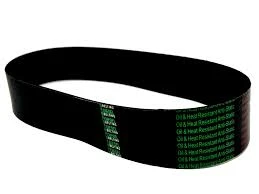- Arabic
- French
- Russian
- Spanish
- Portuguese
- Turkish
- Armenian
- English
- Albanian
- Amharic
- Azerbaijani
- Basque
- Belarusian
- Bengali
- Bosnian
- Bulgarian
- Catalan
- Cebuano
- Corsican
- Croatian
- Czech
- Danish
- Dutch
- Afrikaans
- Esperanto
- Estonian
- Finnish
- Frisian
- Galician
- Georgian
- German
- Greek
- Gujarati
- Haitian Creole
- hausa
- hawaiian
- Hebrew
- Hindi
- Miao
- Hungarian
- Icelandic
- igbo
- Indonesian
- irish
- Italian
- Japanese
- Javanese
- Kannada
- kazakh
- Khmer
- Rwandese
- Korean
- Kurdish
- Kyrgyz
- Lao
- Latin
- Latvian
- Lithuanian
- Luxembourgish
- Macedonian
- Malgashi
- Malay
- Malayalam
- Maltese
- Maori
- Marathi
- Mongolian
- Myanmar
- Nepali
- Norwegian
- Norwegian
- Occitan
- Pashto
- Persian
- Polish
- Punjabi
- Romanian
- Samoan
- Scottish Gaelic
- Serbian
- Sesotho
- Shona
- Sindhi
- Sinhala
- Slovak
- Slovenian
- Somali
- Sundanese
- Swahili
- Swedish
- Tagalog
- Tajik
- Tamil
- Tatar
- Telugu
- Thai
- Turkmen
- Ukrainian
- Urdu
- Uighur
- Uzbek
- Vietnamese
- Welsh
- Bantu
- Yiddish
- Yoruba
- Zulu
ኅዳር . 08, 2024 14:18 Back to list
Understanding the Importance and Functionality of Automotive V Belts in Vehicles
Understanding Automotive V Belts An Essential Component in Modern Vehicles
Automotive V belts are critical components in the mechanical systems of modern vehicles. These belts, often referred to as drive belts, play a pivotal role in the operation of various engine accessories, ensuring that everything runs smoothly and efficiently. In this article, we will explore the functioning, types, maintenance, and importance of V belts in automotive applications.
What is an Automotive V Belt?
A V belt is a type of flexible mechanical belt with a trapezoidal cross-section, designed to transmit power between axles in the engine and accessory systems. Its unique shape helps it fit snugly into the grooves on the pulleys, providing a higher grip and reducing slippage, which is crucial for effective power transmission. V belts are primarily used to connect the crankshaft to various engine components, such as the alternator, water pump, power steering pump, and air conditioning compressor.
How V Belts Work
The operation of a V belt is relatively straightforward. When the engine runs, the crankshaft rotates, which in turn rotates the pulleys connected to the belt. As the crankshaft turns, the V belt moves along the grooves of these pulleys, facilitating the transfer of power to the attached components. The efficiency and effectiveness of this power transfer are significantly influenced by the belt's tension, alignment, and condition.
Proper tension is essential; if the belt is too loose, it may slip and fail to drive the components effectively. Conversely, if it is too tight, it can lead to excessive wear and tear on both the belt and the components it drives. Therefore, regular inspection and adjustment of belt tension are necessary to ensure optimal performance.
Types of V Belts
There are several types of V belts, each designed for specific applications and requirements. The most common include
1. Classic V Belts These are the traditional belts with a simple trapezoidal shape. They are widely used in older vehicles and simpler applications.
automotive v belt

2. Narrow V Belts As the name suggests, these belts are narrower than classic V belts and can operate under higher RPMs. They are often found in performance vehicles and equipment that require high-speed operation.
3. Poly-V Belts Also known as serpentine belts, these have multiple ridges on their surface, allowing them to drive multiple components simultaneously. They are commonly used in modern vehicles, as they reduce weight and space consumption.
4. Variable Frequency Drive V Belts These are designed for use in variable speed applications, allowing for efficient performance under varying load conditions.
Maintenance and Replacement
Maintaining V belts is crucial for ensuring the longevity and efficiency of a vehicle's engine system. Regular inspections should be conducted to check for signs of wear, such as cracks, fraying, or glazing. Additionally, listening for unusual noises like squealing or chirping can indicate belt slippage or misalignment.
If a V belt appears worn or damaged, it is essential to replace it immediately. Delaying replacement can lead to further damage to the engine components, potentially resulting in costly repairs. Typically, V belts should be replaced every 60,000 to 100,000 miles, but this can vary depending on the vehicle's make, model, and usage conditions.
The Importance of V Belts
The significance of V belts in automotive engineering cannot be overstated. They contribute significantly to the efficient functioning of crucial engine accessories, directly impacting vehicle performance, fuel efficiency, and emissions. A well-maintained V belt system ensures that components like the alternator and water pump operate effectively, leading to a smoother drive and extending the vehicle's lifespan.
In summary, automotive V belts are an integral part of modern vehicles, facilitating power transfer between the engine and various accessories. Understanding their function, types, and maintenance can help vehicle owners ensure that their cars run smoothly, perform efficiently, and remain reliable for years to come. Regular inspections and timely replacements are essential to maintaining the health of these vital components, ultimately contributing to a safer and more economical driving experience.
-
Upgrade Power Steering Pump Belt for Smooth, Quiet Operation
NewsAug.27,2025
-
Precision Timing Belt & Chain: Engine Performance & Durability
NewsAug.26,2025
-
Precision Lathe Drive Belts: Durable & Reliable Performance
NewsAug.25,2025
-
84.5 Serpentine Belt: Durable & Precision Fit for Your Engine
NewsAug.24,2025
-
Premium Ribbed Drive Belts for Quiet Power Transmission
NewsAug.23,2025
-
High-Performance Vehicle Timing Belt for Engine Precision
NewsAug.22,2025

